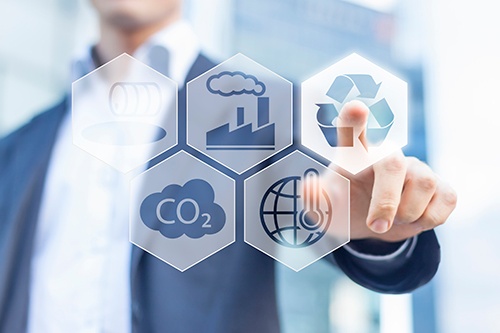
Moving the needle from theory to practice was at the heart of AIAG’s 2016 Corporate Responsibility Summit, held April 27-28, 2016, at the Suburban Collection Showplace in Novi, Michigan. Speakers addressed a variety of CR topics, providing the latest information to help participants build a business case for sustainability.
In this third of a five-part article series, here are some highlights from Unilever’s successful business case for sustainability and a presentation on lightweight constructions and tires.
Unilever’s Business Case for Sustainability
The 2016 CR Summit invited one of the world’s corporate leaders on sustainability to share its success story. Neal Saiz, CSP, CHMM, who serves as safety, environmental, sustainability and security director at Unilever, said, “Sustainability is the business plan at Unilever — not something we just go to occasionally.” His company’s goal is to double the business while reducing its environmental footprint.
As number one on the Dow Jones Sustainability Index for Food, Beverage and Tobacco companies, Unilever has an impressive story. “We’ve made a business case for sustainability,” he said, “with 50 percent of our growth in 2015 coming from sustainable brands. The best part is that sustainable brands are more profitable for us.”
Saiz shared an example of how sustainable practices can set a company up for success. When the bird flu broke out in 2014, he said, millions of chickens had to be killed. But because 35 percent of the eggs that Unilever used were cage-free eggs, Unilever was in position to turn the situation to a competitive advantage.
“While others were scrambling to find eggs for their products, Unilever increased its market share for Hellman’s because we could increase production during a time when other manufacturers had to retreat,” he said. “Now, Unilever is moving to 100 percent cage-free eggs.”
Water scarcity issues are also at the top of Unilever’s concerns. “We had a factory in South America that shut down because the river went dry,” he said. “Now, we’re looking at water issues and planning for zero water discharge in as many of our products as possible.”
Unilever already has a factory with zero CO2, he said, and the company is trying to become carbon-positive in all Unilever operations. In 2015, it was also the first company in its industry with zero-waste-to-landfill at all facilities. Unilever wants to eliminate coal from its energy mix by 2020 and replace it with renewable energies.
“Now, we’re working on our supply chain with the same goals,” he said.
The bottom line, however, is that companies can do sustainable initiatives and projects, but “you still have to compete with the rest of the world,” Saiz said. Strategies have to be driven by leadership, factory directors, and line managers. “And we’re pushing these initiatives down to our non-manufacturing sites as well,” he said. “Suppliers, vendors, and even customers are working with us on this.”
AIAG members can access all the presentations from this year’s Corporate Responsibility Summit online at www.aiag.org.
Carla Kalogeridis is AIAG’s e-news editor.


